Steel Panthers Series Retrospective (Part One)
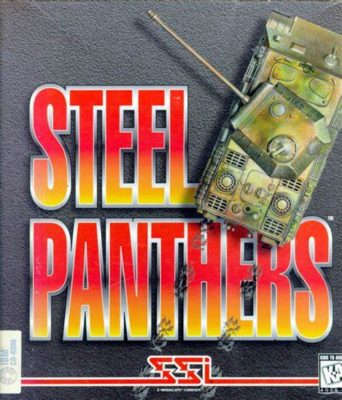 By Patrick S. Baker
By Patrick S. Baker
Wars and soldiers are similar across time and space. So, it is also that war games are similar across time and space. Often the best war games are not the most innovative, but rather present the familiar elements of simulated war in a way which is compelling and engaging. The ones that are both familiar and gripping give us, the players, those rare war games which are both easy to play and understand, but hard to master. The Steel Panthers games fit right in that hard-to-find sweet spot.
Steel Panthers started development in May 1994 and was released in September 1995. The game was designed and programmed by Gray Grigsby and Keith Brors and were produced and marketed by Strategic Simulations, Inc. (SSI).
Steel Panthers covered the three major theaters of World War Two: Eastern Front, Western Front and the Pacific. The game was turn-based and played against either the in-game Artificial Intelligence (AI), or another human over email, or via hot-seat. The game was played from a top-down perspective on a terrain map with an overlay of hexagons (hexs). The player controlled their units down to individual tank, vehicle, squad, or section: between 8 and 12 men.
Usually, the player commanded a battalion-sized unit, although some scenarios had the player in charge of smaller, company-sized units, or larger, regiment-sized ones. The player controlled many facets of the game from ammunition usage and troop deployment to the chain-of-command. The game had 62 pre-constructed single-battle scenarios and 7 pre-built campaigns, either branching or linear. It also had a battle generator, or sand box, in which the player could set parameters for a single battle and play them out. There was also a campaign generator.
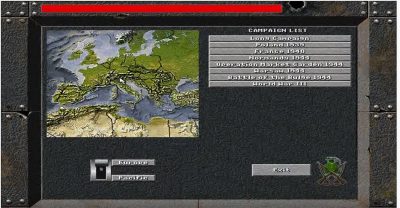
There was nothing much new about the game mechanics. Many people noted the that “Steel Panthers shares some similarities with other SSI war games such as Panzer General and Allied General…” Grigsby himself claimed: “As far as the game engine is concerned, any similarities between Steel Panthers and Allied General and Panzer General are purely coincidental…” The fact that the parallels existed between the games, or even board-games such as Squad Leader and Steel Panthers, does not disparage any of the games. But it does show there are only so many ways that a turned-based, hex-controlled war game can be designed and played.
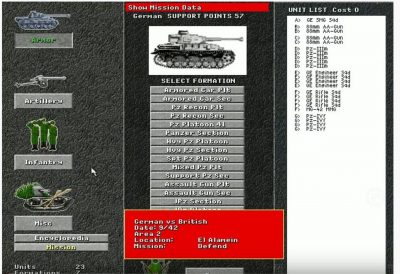
The real virtues of Steel Panthers lay not in innovation of mechanics but in the superior graphics, the massive and detailed database of weapons, systems and units and the superior AI.
Graphics: In 1992 Grigsby started publicly discussing a plan to develop a new game as a way to update some of his earlier war games such as Kampfgruppe and Panzer Strike, but he was “waiting on a new graphics system from SSI” before starting work on the new game. The reason Grigsby need a new graphics system was the development of the Super Video Graphics Array (SVGA) video standards.
The SVGA was a step above VGA, with SVGA monitors able to display up to 16-million colors with a resolution of 800 x 600 on 14-inch monitors and up to a 1200 x 1600 resolution on a 20-inch screens. Grigsby wanted to use the advanced graphics to highlight the visual details of the new game.
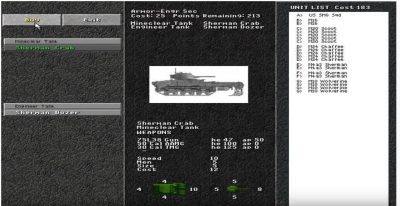
The Database: Steel Panther had a massive database of weapons and armor. Over 200 tanks and other armored vehicles, 120 types of weapons, such as machine guns, artillery, mines, etc, and more than a dozen different kinds of infantry squads. Each object has unique characteristics, such as different armor strengths depending of facing, weapons’ caliber, firing range and accuracy based on hex-distance to target, shots per turn, movement per turn and so on. Grigsby drew the information in the database from rule books from miniatures-based games, such as Jag Panzer, Panzer War, and GI Commander.

The AI: Unlike many AIs of that time, Steel Panthers’ AI could handle itself very well against human opponents. The AI was particularly strong on the defense. But it was no slouch on offense, often trying to pull off a double envelopment battle of annihilation. Grigsby describes the AI as “…a bunch of kludges used to make something that’s really stupid look not quite so stupid.” The AI, in practice, was way better and smarter than just “…not so stupid…”
The development of Steel Panthers was marred by “a considerable amount of tension” and “bad karma” between SSI executives and Grigsby and Brors. The main point of contention was that the company wanted Grigsby to simplify his design, to be more in line with Panzer General, which would reach a much wider audience. Grigsby simply “refused to compromise his standards of realism and detail.”
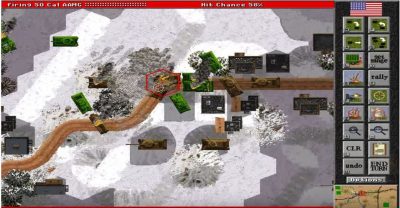
While the game was being created, Grigsby and Brors thought it had “great potential”, but didn’t think the whole thing was going to be a huge success. The two men were great game developers, but not so great as prophets. Steel Panthers was a huge sales and critical hit.
In less than two years the game had sold 85,000 copies and sales eventually reaching over 130,000 total units. Computer Games Magazine later labeled it one of the most successful computer war games ever. At which point, Grigsby was “cashing royalty checks”, [and] “feeling better about things.”
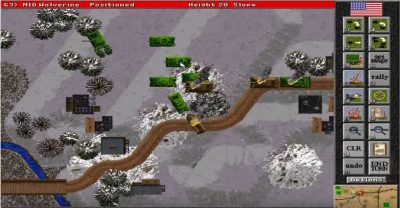 Computer Gaming World and Electronic Entertainment magazines both award Steel Panthers five out of five starts. PC Gamer (US) magazine gave it 90% score and called it “easily one of the best tactical simulations ever developed for the PC.” Computer Gaming World, PC Gamer US and Computer Games Strategy Plus named Steel Panthers “The Best Wargame of 1995.” The game also tied for Computer Game Review’s 1995 “Military Sim of the Year” prize. Others were less impressed, Computer Games Strategy Plus called it “a gem in the rough” and “flawed”, while still very fun to play. Maximum said the game was: “a must for any war game guru” and then gave it only 3 out of 5 stars.
Computer Gaming World and Electronic Entertainment magazines both award Steel Panthers five out of five starts. PC Gamer (US) magazine gave it 90% score and called it “easily one of the best tactical simulations ever developed for the PC.” Computer Gaming World, PC Gamer US and Computer Games Strategy Plus named Steel Panthers “The Best Wargame of 1995.” The game also tied for Computer Game Review’s 1995 “Military Sim of the Year” prize. Others were less impressed, Computer Games Strategy Plus called it “a gem in the rough” and “flawed”, while still very fun to play. Maximum said the game was: “a must for any war game guru” and then gave it only 3 out of 5 stars.
When the game’s success became clear to all, Grigsby and Bror, at SSI’s behest, went to work on a sequel.
Patrick S. Baker is a former US Army Field Artillery officer and retired Department of Defense employee. He has degrees in History, Political Science and Education. He has been writing history, game reviews and science-fiction professionally since 2013. You can find some of his work at , and .

Thanks for the flashback, Steel Panthers was an excellent game (right up there with Quake). Is it still around?
Yes they have actually even updated it and its available on the Shrapnel site. Still going strong
Hey Lee!
There are a couple of different forks that Steel Panthers took some time back. One of them is sold by MatrixGames, but has not been updated for many years now. The other is sold by ShrapnelGames and is joined there by a modern tank simulation as well. Both the WW2 and modern tank simulation games are updated pretty much every year.
You should check em out!
You can still play it, it’s available on the Matrix website. I just never got the offboard artillery to work with window 10.
great game, would definitely buy a remake
One of my favorite PC games ever. In fact, I chose the name of my blog in its honor.
The Shrapnel game is great. I still play it. They update every April or so.